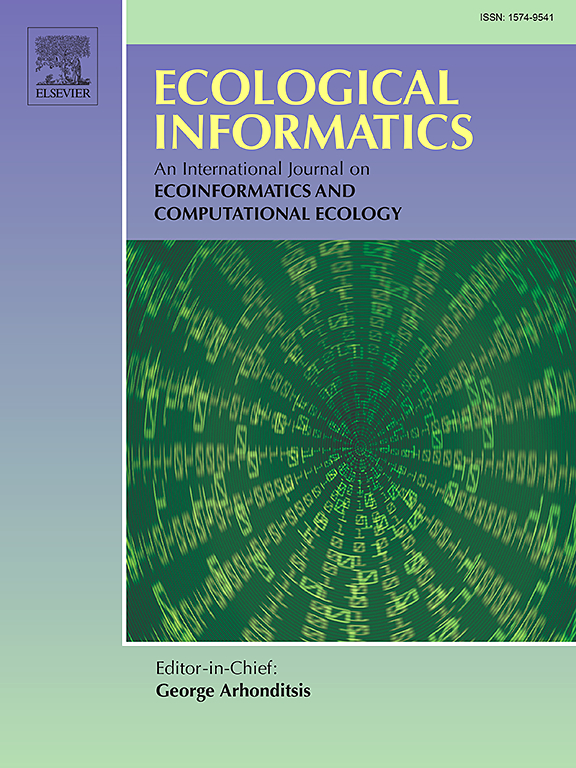Early detection of Wheat Stripe Mosaic Virus using multispectral imaging with deep-learning
IF 5.8
2区 环境科学与生态学
Q1 ECOLOGY
引用次数: 0
Abstract
Wheat Stripe Mosaic Virus (WhSMV) is a soilborne virus that threatens wheat yields in South Africa. Traditional WhSMV diagnosis methods rely on visual inspection, which is labor-intensive, time-consuming and prone to errors. This study explores the application of deep-learning algorithms employing various spectral filters for the early identification of WhSMV. The models were tested for classifying healthy, early, and diseased stages, where early-stage specifically included images taken before any visible disease symptoms appeared. DenseNet121 demonstrated the highest accuracy of 91.23% with the K590 filter, which can capture 590-1000 nm, including parts of the visible and near-infrared spectrum. Further, the K590 filter showed the most significant precision values with most of the tested Convolutional Neural Networks, Vision Transformers, and hybrid and Swin Transformer models. This result suggests filters that capture visible and near-infrared spectrum ranges perform better in identifying WhSMV. These findings show that multispectral images combined with deep-learning models are viable for WhSMV detection in wheat fields, especially for identifying early-stage infections.
基于深度学习的多光谱成像技术早期检测小麦条纹花叶病毒
小麦条纹花叶病毒(WhSMV)是一种威胁南非小麦产量的土壤传播病毒。传统的WhSMV诊断方法依赖于目测,费时费力且容易出错。本研究探讨了采用各种光谱滤波器的深度学习算法在早期识别WhSMV中的应用。对这些模型进行了健康、早期和患病阶段的分类测试,其中早期阶段具体包括在任何可见疾病症状出现之前拍摄的图像。使用K590滤光片,DenseNet121的精度最高,为91.23%,可捕获590-1000 nm,包括部分可见和近红外光谱。此外,K590滤波器在大多数测试的卷积神经网络、视觉变压器、混合变压器和Swin变压器模型中显示出最显著的精度值。该结果表明,捕获可见光和近红外光谱范围的滤波器在识别WhSMV方面表现较好。这些发现表明,多光谱图像与深度学习模型相结合,在麦田中检测WhSMV是可行的,特别是在识别早期感染方面。
本文章由计算机程序翻译,如有差异,请以英文原文为准。
求助全文
约1分钟内获得全文
求助全文
来源期刊

Ecological Informatics
环境科学-生态学
CiteScore
8.30
自引率
11.80%
发文量
346
审稿时长
46 days
期刊介绍:
The journal Ecological Informatics is devoted to the publication of high quality, peer-reviewed articles on all aspects of computational ecology, data science and biogeography. The scope of the journal takes into account the data-intensive nature of ecology, the growing capacity of information technology to access, harness and leverage complex data as well as the critical need for informing sustainable management in view of global environmental and climate change.
The nature of the journal is interdisciplinary at the crossover between ecology and informatics. It focuses on novel concepts and techniques for image- and genome-based monitoring and interpretation, sensor- and multimedia-based data acquisition, internet-based data archiving and sharing, data assimilation, modelling and prediction of ecological data.
 求助内容:
求助内容: 应助结果提醒方式:
应助结果提醒方式:


